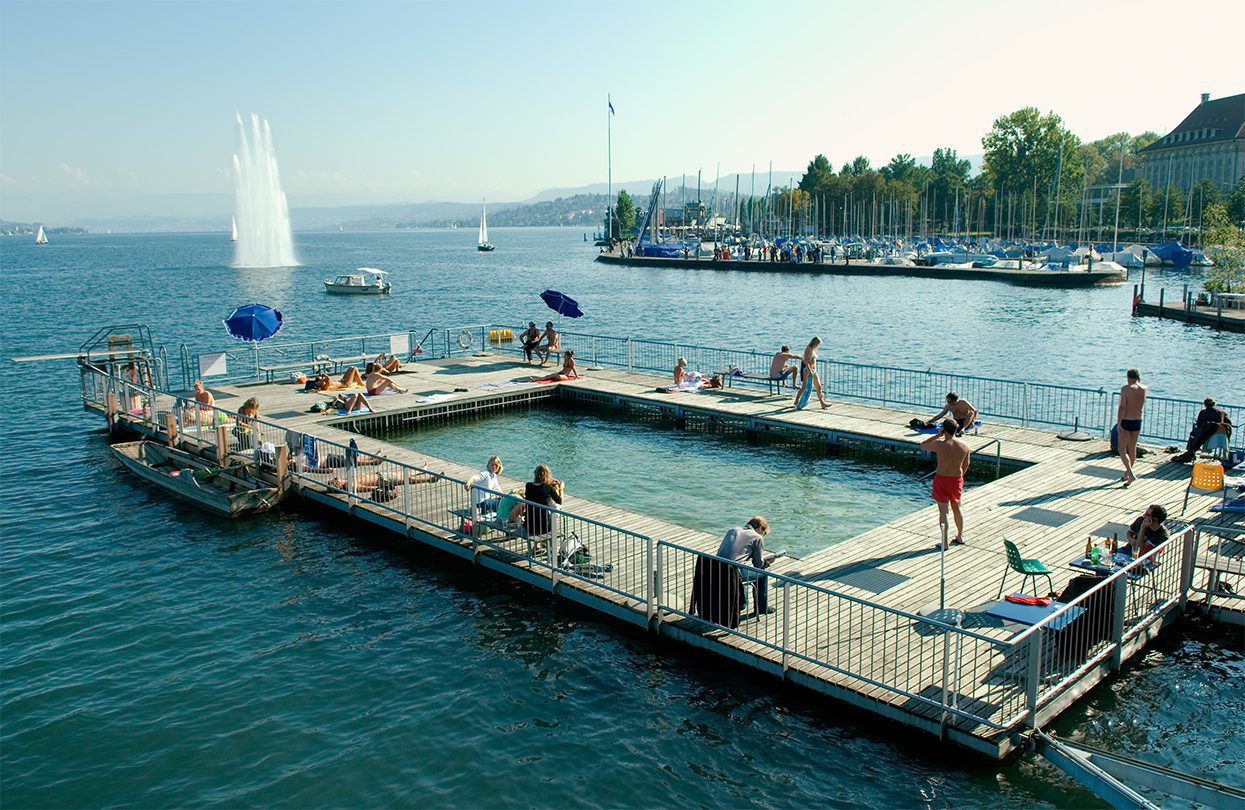[vc_row][vc_column][vc_column_text]Switzerland’s biggest city is an urban oasis mixing medieval charm with design-forward style, writes Claire Doble
Zurich is a perennially popular destination for high-end and design-conscious travellers alike. Situated in the heart of Europe, Zurich is a highly attractive city destination in its own right and a fantastic base to explore further afield. The city offers a world-class international airport and superb transport links.
This little-big city is the largest in Switzerland with a population of around 400,000. Its comfortable size provides the buzz of a metropolis mixed with a laid-back, unhurried pleasantness. The sense of space and natural beauty is helped by the town’s location on the shores of sparkling Lake Zurich and along its two main tributaries, the River Limmat and the River Sihl.
Most visitors’ first impressions of Zurich will be in and around its historic centre. The city is divided into Kreis (districts) and central Zurich (Kreis 1 and 2) has several distinct areas. The main shopping street, Bahnhofstrasse, is as well-known as it is well-trodden. World-famous as one of the most sought-after retail strips on the planet, you’ll find all the big luxury brands here, while still getting a “high street” experience – Vuitton, Dior, Chanel and, naturally, all the top Swiss watch brands from Rolex and Patek Philippe to Swatch. According to Zurich style guru and fashion columnist Jeroen van Rooijen, these days people are seeking out lesser-known, local labels as well.[/vc_column_text][/vc_column][/vc_row][vc_row][vc_column][vc_column_text]
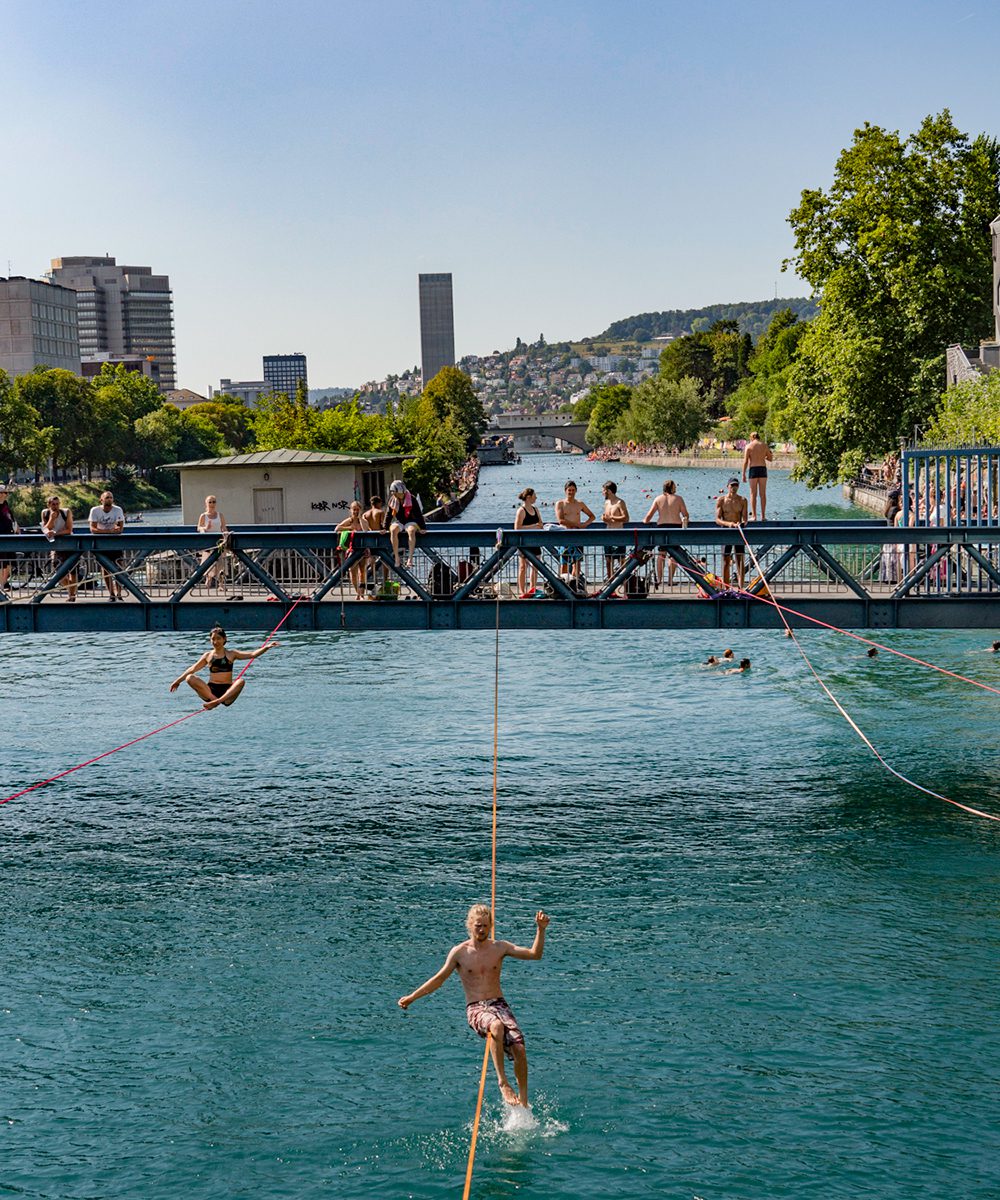
The Limmat River flows through Zurich, Zürich Tourismus

The distinctive double towers of the Grossmünster church
[/vc_column_text][/vc_column][/vc_row][vc_row][vc_column][vc_column_text]“The big brands continue to grow and expand, making Zurich look like any city in the world,” he says, “They want to find a ‘local tone’ again, something special that is unique to a certain town.”
One place to look for local flavour is nearby. The area between Bahnhofstrasse and the river Limmat is a maze of lovely streets with numerous small shops, ateliers and restaurants. Here you’ll find pleasant squares with handsome Reformation fountains (nearly all Zurich’s public fountains provide “trinkwasser” so you need never go thirsty). Check out flamboyant local designerJulian Zigerli as you wind your way up to the Lindenhof – a small, tree-studded plateau above the river that’s a popular photo spot.
On your way back down, stop off for some hand-made Swiss chocolate at ConfisiereTeuscher or Honold’s. Another option is a glass of local wine by the banks of the river at the 5-star Hotel Storchen, which has been welcoming guests for more than 660 years. The al fresco tables at Storchen offer a great view of Europe’s largest clockface, St Peter’s, and around the corner is the elegant Fraumünster. The Fraumünster’s stained-glass windows by Chagall and Giacometti are a must-see.
Cross one of the Limmat’s charming bridges and climb the steep, cobblestoned streets that wind through the Niederdorf area. This largely-pedestrianised zone is home to Zurich’s other main church, the Grossmünster, with its distinctive double towers. A favourite spot to pause here is at the elegant ConditoreiPéclard Schober. This pretty chocolate-shop-café has an always impressive seasonal window display. Sit out the front for a decadent hot chocolate or take refuge in the tranquil inner courtyard for a slice of quiche and salad before continuing to shop. The boutiques of Niederdorf provide a charming selection of local-designed clothing, jewellery, homewares, books and curios. There are also a few excellent children’s toy shops.
Staying central, the lakeside area of Seefeld beyond the Zurich Opera house also has some notable high-end shops. Van Rooijen recommends Trunk for menswear and de Niz for couture.
“Women have less choice, although one must say that Vestibule and Trois Pommes have all the important brands,” he adds.[/vc_column_text][/vc_column][/vc_row][vc_row][vc_column][vc_column_text]
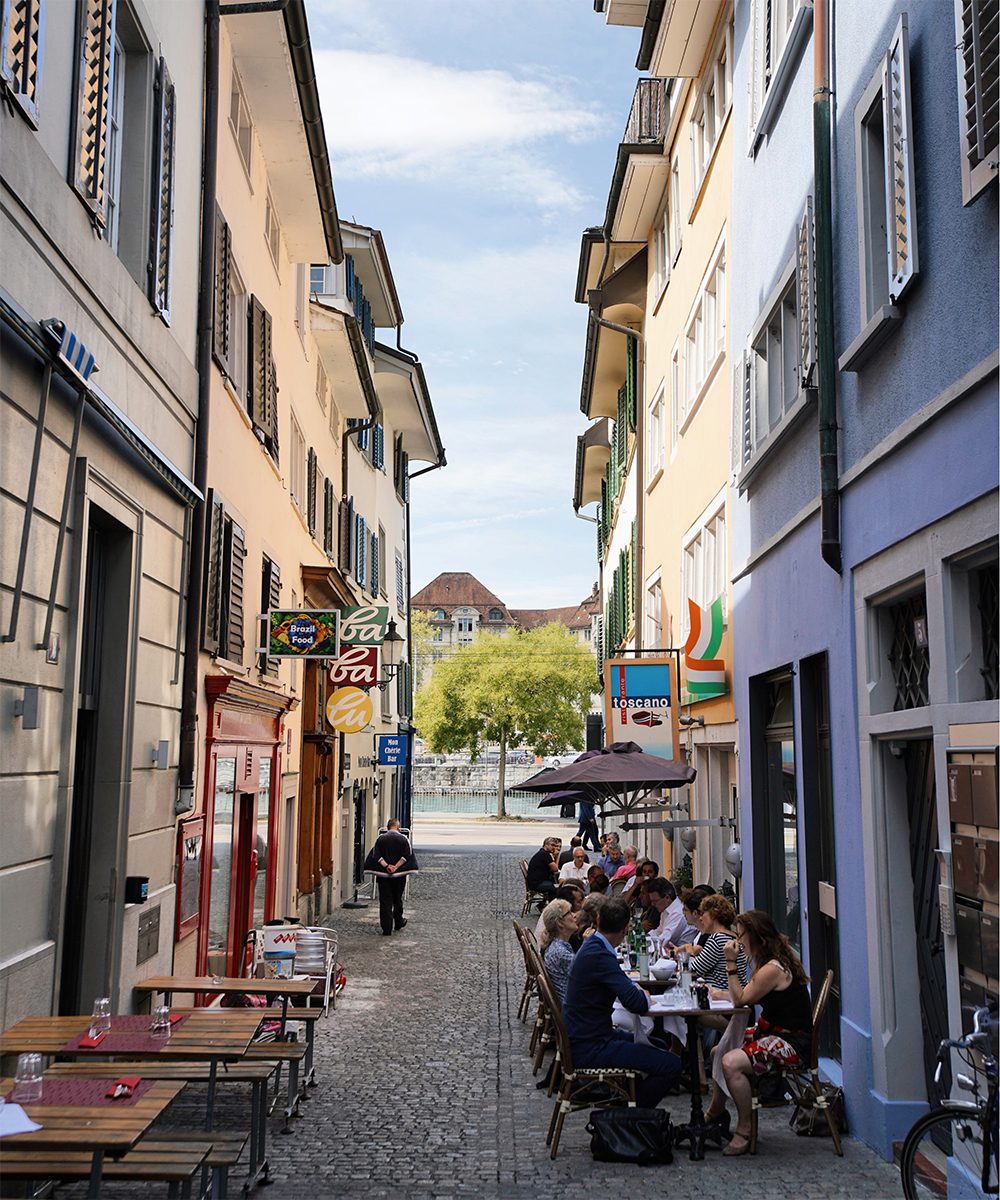
Cafes in the Niederdorf district

Contemplating Edvard Munch at the Kunsthaus Zurich
[/vc_column_text][/vc_column][/vc_row][vc_row][vc_column][vc_column_text]Both Niederdorf and the Old Town lead you naturally to the shores of the stunning Zurichsee (Lake Zurich). Here, the Zurich opera house is a jewel in the crown as is the space in front, Sechseläutenplatz, the city’s largest town square. Depending on the time of year, Sechseläutenplatz hosts various events such as Zurich’s Wienachtsdorf (Christmas market) and is always worth a visit.
Central Zurich is wonderful for walking – the lakeside offers wide promenades dotted with buskers, ice-cream stands and park benches and grass on which to sit and watch the world go by. And, if you’re lucky enough to visit Zurich in summer, you’re in for a special treat. The city comes alive in the warmer months and it’s an open secret that many locals love their water sports as much as wintry snow-based ones.
“Zurich is really special in summer,” says Swiss-born van Rooijen, who has lived here since his student days in the 1980s.
Along the “Gold Coast” side of the lake, you’ll find Bad Utoquai – one of Zurich’s Art-Deco bathing houses, where you can enjoy the sun and a swim. Another popular lake “badi” is SeebadEnge, which also hosts an evening programme of live music, film screenings and DJs throughout the summer. As well as diving into the lake, you can float down the emerald waters of the River Limmat or cool off at one of 15-odd outdoor pools dotted in and around Zurich. Many badis also have cafes, on-site massage and wellness offerings.
Speaking of wellness, arguably a Swiss invention, you’ll find no shortage of options in Zurich. A pleasant, affordable day-spa is the Thermalbad Zurich. For CHF60, you get access to the Irish-Roman spa ritual (scrub, soak, steam), saunas, thermal-heated tubs and the Thermalbad’s rooftop pool with incredible views.
If you’re after something more decadent, the city’s high-end hotels have luxurious wellness offerings, for example, at the grande dame of Zurich hotels, the 5-star Dolder Grand. This castle-like residence is perched high above Zurich with stunning lake views. The Dolder offers both a 40,000 square metre spa with a high-end selection of treatments and two Michelin-starred dining in The Restaurant, which attracts customers from all over the world. The Restaurant’s head chef Heiko Nieder was awarded Gault Millau’s chef of the year in 2019.[/vc_column_text][/vc_column][/vc_row][vc_row][vc_column][vc_column_text]
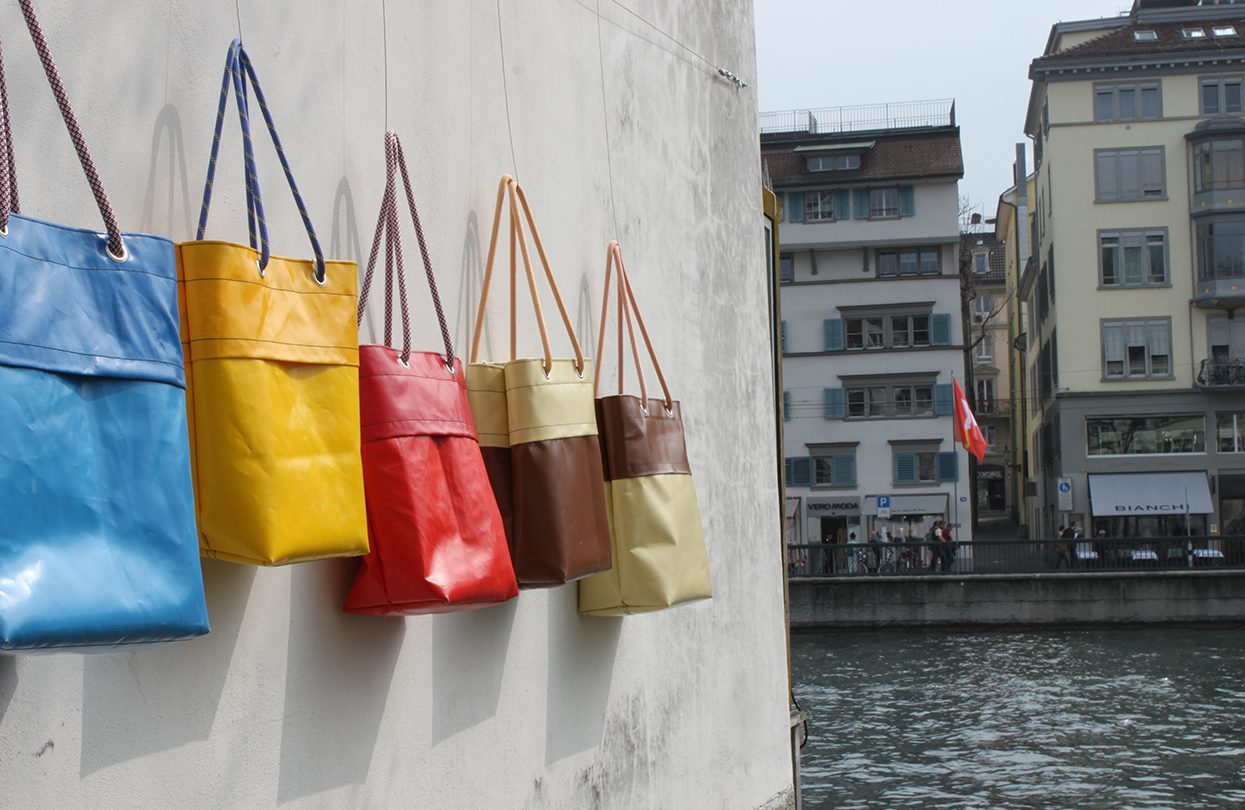
Shopping in central Zurich

Viadukt Markthalle in Zurich West sells fresh produce and local specialities
[/vc_column_text][/vc_column][/vc_row][vc_row][vc_column][vc_column_text]“Chef Heiko Nieder’s philosophy includes innovative gourmet cuisine that defies classic culinary reconceptions for all to challenge their taste buds and see food through its true art,” says Dolder spokesperson Hannah Corcoran.
For Michelin-star dining, Zurich punches above its weight, with nine Michelin-starred restaurants across the city. Other notable Michelin-star hotel restaurants include Pavillon at the Baur au Lac and Ecco at Atlantis by Giardino. The latter is a relatively new addition to Zurich’s 5-star hotel scene and offers a modern take on accommodation with a Scandinavian-influenced design, a 25-metre outdoor pool and, of course, its famous 2-Michelin star restaurant.
“Sometimes foodies travel from all around the world just to have a dinner at the Ecco Zurich,” says Giulia Raths from Atlantis by Giardino. “The Ecco also has a lot of regular customers from Zurich and around.”
For traditional Swiss dishes, such as ZürcherGeschnetzeltes (beef strips in cream sauce), fondue and raclette, you’ll also be spoilt for choice in Zurich. The Kronenhalle at Bellevue is a place to see and be seen, and the Zeughauskeller off Bahnhofstrasse is a favourite for tourists and locals alike.
However, if you’re after something more avantgarde, while still Michelin-star, you should head to Maison Manessse in Kreis 3. Here, 35-year-old Swiss-Australian chef and part-owner Fabian Spiquel produces superbly simple dishes in a friendly, non-fussy environment. The food and atmosphere is quite distinct from the white-tablecloth experience of many other Michelin restaurants in Zurich[/vc_column_text][/vc_column][/vc_row][vc_row][vc_column][vc_column_text]
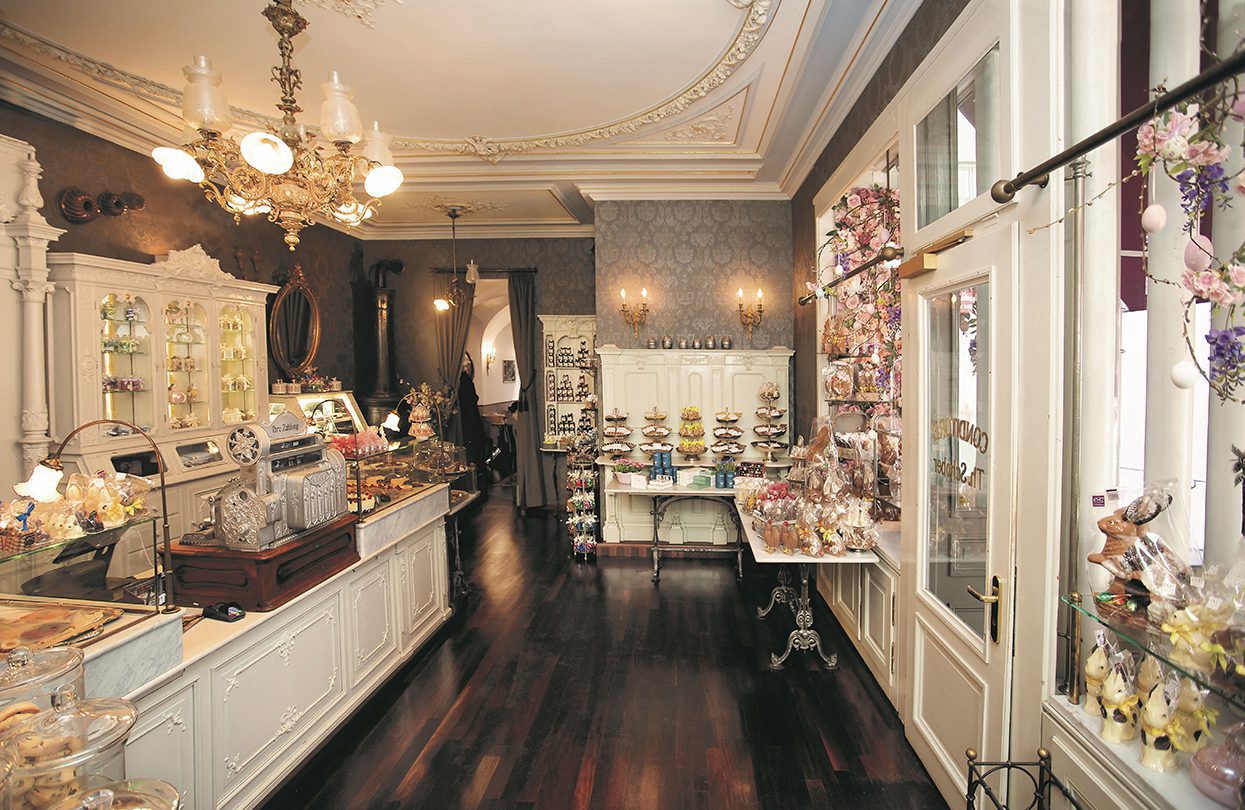
Artisanal chocolates form a spectacular display at Conditorei Schober

Food from the 2-Michelin starred Ecco at Atlantis by Giardino
[/vc_column_text][/vc_column][/vc_row][vc_row][vc_column][vc_column_text]“When we opened [in 2013] we definitely stood out because of how different we were, how crazy our ideas and general approach to food was. We were very experimental in the beginning, maybe even too experimental,” says Spiquel.
Zurich’s reputation in foodie circles is changing. Spiquel says the Zurich dining scene is growing, with plenty of new, younger chefs trying different things. While Maison Manesse stormed in looking quite radical, they have since simplified their approach. But the restaurant has lost none of the quality, nor its happening vibe.
“I developed this concept to give our guests the experience I like to have when I go out to dine. I want comfort, I don’t want to be in a place that’s lit up like a hospital. I want an ambience, an atmosphere that’s lively and fun and loud and where I can be myself at the table.”
None of this would matter of course if the food wasn’t up to scratch. But it is simply exquisite. From artisanal food to art itself, Zurich offers a rich experience. The city’s largest art gallery, the Kunsthaus Zurich, is currently undergoing a major expansion. A new, David Chipperfield-designed wing is due to open at the end of 2020. This addition will feature extensive gallery space, a shop, bar, banquet room and central hall linking the square in front of the gallery to the garden.
Björn Quellenberg from the Kunsthaus explains that the public will be able to browse through the two buildings via an underground passage for which an artwork by Laurence Weiner has been commissioned. On the square between the buildings, a light installation by Swiss artist PipilottiRist will be projected at night. Quellenberg says the Zurich Kunsthaus is popular because it offers a great mix: one can browse through many centuries of art under one roof – from medieval paintings on wood to contemporary installations.[/vc_column_text][/vc_column][/vc_row][vc_row][vc_column][vc_column_text]
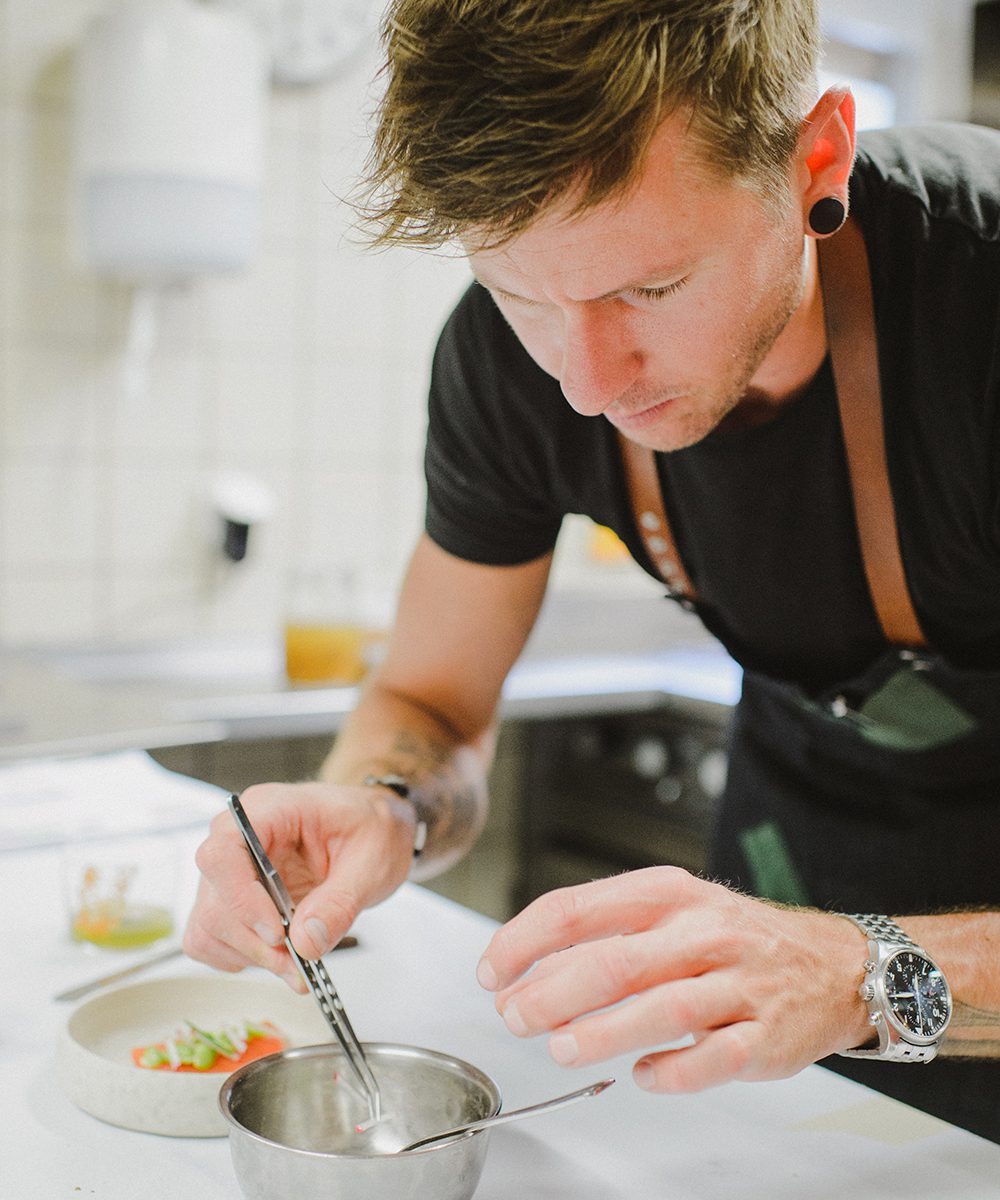
Fabian Spiquel, chef at Maison Manesse
[/vc_column_text][/vc_column][/vc_row][vc_row][vc_column][vc_column_text]“Locals appreciate the temporary exhibitions of international grandeur while tourists are attracted by the largest collection of works by Alberto Giacometti on permanent display, the monumental waterlily paintings by Claude Monet, the Chagall room or the largest presentation of paintings by Edvard Munch outside Norway,” he says.
When asked what he loves about Zurich, Quellenberg, originally from Germany but a Zurich resident for 20 years and a naturalised Swiss citizen, sums up:
“This little big city has a high quality of life, combining a stunning cultural offering with excellent business opportunities, preserving its traditions while being perfectly connected to the rest of the world.”
Zurich is an ideal gateway to the rest of Switzerland and Europe, with its central location and nice climate. From here you can easily access Swiss attractions such as the Alps or Art Basel, and beyond to the rest of Europe. Zurich’s international airport is world-class and currently expanding its offering. A new, high-end shopping/lifestyle district, The Circle, will open at the airport in 2020.
“We set luxury as equal to Swiss quality and that’s the main reason for the attraction: nice small country with a beautiful landscape, easy to go everywhere, safe and clean, multi-cultural, multi-lingual,” says RaffaelaStelzer from The Circle.
Stelzer says that a 10-minute commute to central Zurich by train makes Zurich Airport one of the largest city airports in the world, which is a major advantage.
“Airports are increasingly becoming meeting places – they are now more than the starting point or destination of a journey. Airports are today excursion destinations, places of experience and shopping opportunities.
“The Circle will strengthen Zurich Airport and make it an urban centre in its own right. It will be a place where people meet in person in an increasingly digital world.”[/vc_column_text][/vc_column][/vc_row][vc_row][vc_column][vc_column_text]
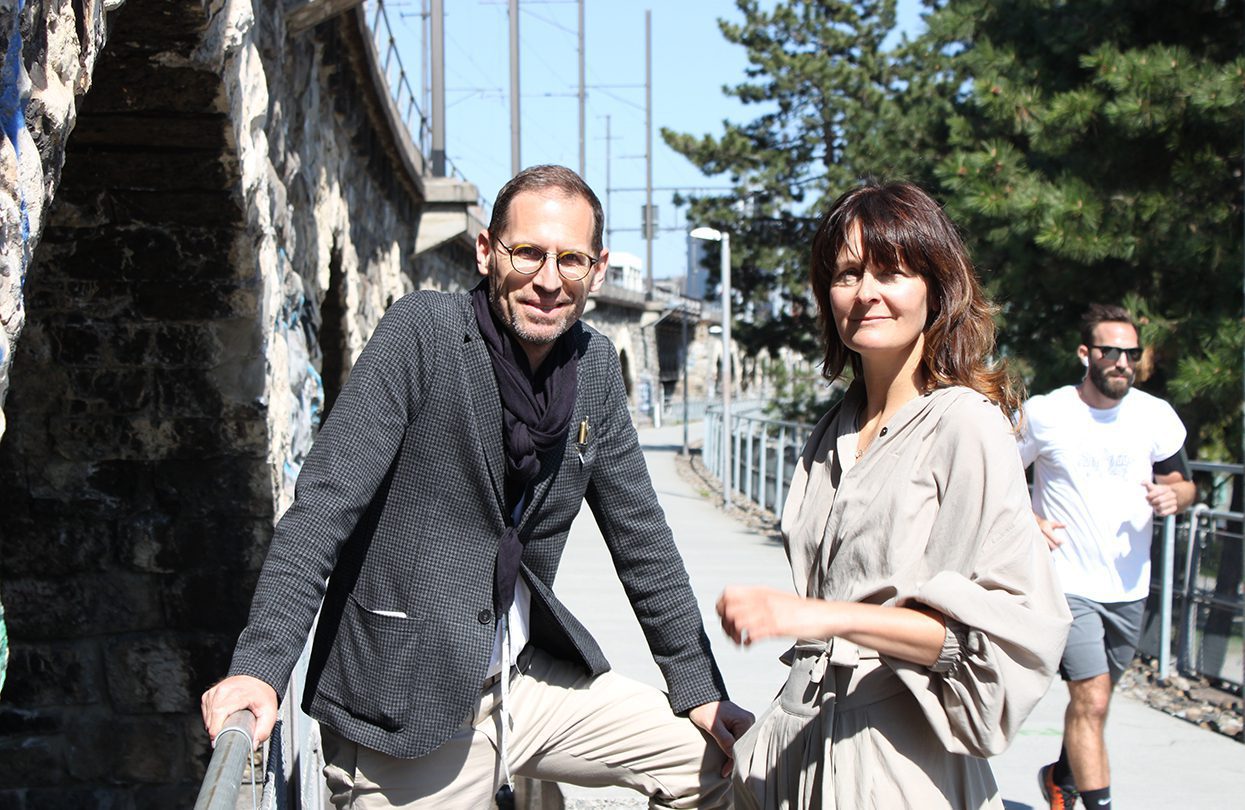
Zurich style gurus Jeroen and Nina van Rooijen in Zuri West
[/vc_column_text][/vc_column][/vc_row][vc_row][vc_column][vc_column_text]Between the airport and central Zurich are a few other areas worth visiting. The suburban district west of Zurich’s main station (Zurich Hauptbahnof) around Langstrasse and Hardbrücke station is known as “Zuri West”. Zuri West stretches across Kreis 4 and 5 and, in many ways, it’s the perfect mix of design-forward and funky while retaining the qualities that make Zurich so great – safe, clean and easy to navigate.
The area near Hardbrücke is an epicentre with around 50 independent retail shops in a relatively compact neighbourhood. This is centred around the Viadukt – a regenerated line of 100-year-old railway arches now containing clothing stores, a food market, café-bars and live music venues – and Frau Gerold’s Garten, a cool urban beer garden flanked by shops, market stalls and cafes.
Jeroen van Rooijen and his wife, Nina van Rooijen have their shop and workspace, Cabinet, in the Viadukt. The area draws people from all over Zurich and beyond.
“We have a lot of local regulars, but we also have regulars who are travellers, for example, there’s one lady from New York who comes to see us every time she’s in Zurich,” says Nina.
“Thirty percent of our customers are tourists” adds Jeroen.
Cabinet is a great example of Zurich style. When I visit, Jeroen is working on a new-old clothing design, the unisex TuTa jumpsuit. His version is an update of the 1919 design by Italian futurist Thayaht, being created in honour of its 100th birthday. The sense I get particularly from talking to Nina and Jeroen is one of knowing their customers and delighting in what makes Zurich unique.
“People in Zurich are still willing to pay a certain price for something good and special. On the other hand, they naturally are not the most outrageous, fashion-savvy and eclectic individuals, they go for simpler shapes and muted colours,” Jeroen says.[/vc_column_text][/vc_column][/vc_row][vc_row][vc_column][vc_column_text]

Restaurants and retailers in the Viadukt
[/vc_column_text][/vc_column][/vc_row][vc_row][vc_column][vc_column_text]The husband and wife team are involved in the regular “Kreislauf 3,4,5” – a weekend shopping tour of local retailers that occurs once or twice a year.
“Many shops that are part of Kreislauf are small and self-owned, you can talk to the proprietors or have things made-to-measure, which is great,” says Jeroen.
“Zuri-West has a special charm and in some corners it is still relatively raw and unfinished. Many new residents have moved in, the rents have gone up, so naturally the younger and arty folks move to new areas. But it will take some years until the seeds they sow there will start to blossom, so: Zuri-West is still good, it is very alive!” ◼[/vc_column_text][vc_column_text]Subscribe to the latest edition now by clicking here.
© This article was first published in June-July 2019 edition of World Travel Magazine.[/vc_column_text][/vc_column][/vc_row]

